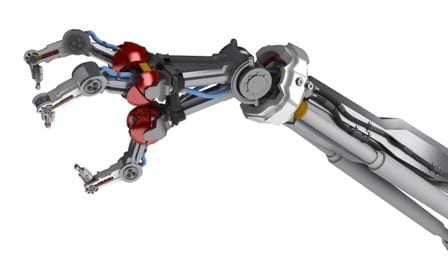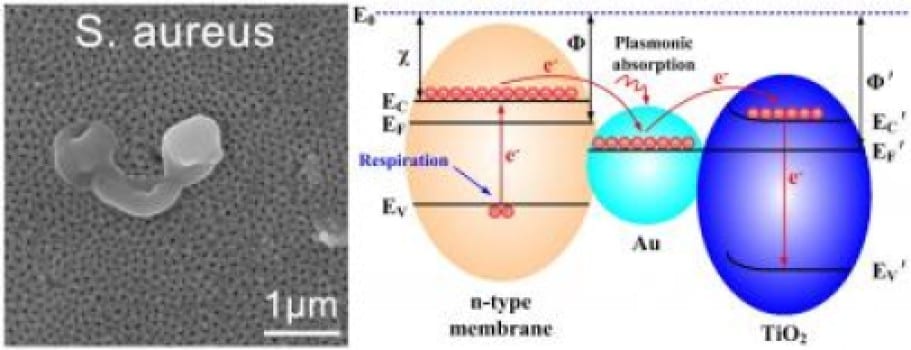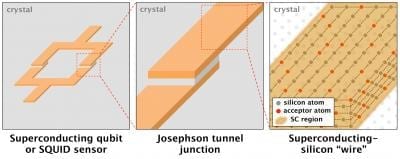
A study conducted at the UPV/EHU-University of the Basque Country has studied how it is possible to save energy in the propulsion of flexible joints without losing precision
Robots are being increasingly used in industrial processes because of their ability to carry out repetitive tasks in a precise, reliable way. Right now, digital controllers are used to drive the motors of the joints of these robots. And it is no easy task developing and programming these controllers so that they will work efficiently. Unai Ugalde-Olea, lecturer in the Department of Electronics Technology of the UPV/EHU, has analysed a way of propelling these systems or robots in a more energy-efficient way and has shown, on a laboratory level, that in some cases energy consumption can be cut by up to 40%. The study has been published in the journal Control Engineering Practice.
Let us imagine, for a moment, the arm of a robot that lifts a cup of coffee to its “lips” over and over again. The joint of this robotic arm needs a certain flexibility plus an electric motor to drive the upward and downward movements. So orders have to be sent to the motor so that the joint can perform the corresponding movements. “The motors need to receive orders constantly. In fact, the motor has to know at all times what angle its axis has to be at. However, current digital controllers only issue orders at specific moments (in discrete time); they can be described as issuing orders by means of pulses: first an order, then a brief pause, then another order, another brief pause… and so on,” explained Unai Ugalde, lecturer in the UPV/EHU’s Department of Electronics Technology. The UPV/EHU researcher has in fact come up with a new proposal for this time interval in which there is no order.
On the whole, in industry, as long as no fresh order is issued, the previous order remains valid. In other words, until the new control order arrives, the previous one is executed. “In this study we have concluded that this way of working can be changed. We have used a polynomial function based on two values (that correspond to the two most recent orders) to reconstruct the process in some way,” explained Ugalde. “This is in fact what is new about the research,” he added.
Read more . . .
The Latest on: Robot joints
[google_news title=”” keyword=”Robot joints” num_posts=”10″ blurb_length=”0″ show_thumb=”left”]
via Google News
The Latest on: Robot joints
- Techman Robot Unveils New High-payload AI Cobot TM30S at Automateon May 8, 2024 at 7:17 am
The TM30S is an extension of the TM AI cobot series, now catering to even higher payloads. With the ability to carry up to 35kg and boasting a reach of 1702mm across six joints, t ...
- Teaching robots to move by sketching trajectorieson May 8, 2024 at 7:02 am
Getting robots to perform even a simple task requires a great deal of behind-the-scenes work. Part of the challenge is planning and executing movements, everything from turning wheels to lifting a ...
- Techman Robot unveils high-payload AI cobot TM30S at Automateon May 7, 2024 at 7:33 am
The TM30S cobot is equipped with 3D and AI recognition technology. Techman Robot has launched the TM30S robotic arm. This heavy-payload AI collaborative robot (cobot) has a maximum payload capacity of ...
- China's home-grown general-purpose humanoid jogs out at 6 km/hon May 7, 2024 at 5:20 am
The Beijing Humanoid Robot Innovation Center has unveiled Tiangong, an electrically-driven general-purpose humanoid that's capable of stable running at 6 km/h, while also able to tackle slopes and ...
- Stanford program matches young patients with robot puppies to relieve anxietyon May 6, 2024 at 10:39 pm
These canines aren't the typical pets you'd find in homes - instead, the four-legged robots can dance, wiggle and twirl through mechanical joints. They can even play ... Students are now developing a ...
- Electric humanoid robot poised to shake up the job marketon May 4, 2024 at 3:00 am
The fully electric Atlas 2.0 robot was designed for real-world applications, and it is capable of lifting and maneuvering heavy, irregular objects.
- Best robot mops in 2024on May 3, 2024 at 12:49 pm
The best robot mops deep clean your floors without leaving streaks. These handy cleaners complement the best robot vacuums, coming in once all debris has been removed from the floor. Robot mops ...
- Elon Musk's robot Optimus: Egg arranging and squats in the fridgeon May 2, 2024 at 8:30 am
Meet Optimus, Elon Musk's robot in final development stages; work set to finish year-end. Bold promises met eventually, as history suggests. Humanoid robots aim to address labor needs.
- New ‘soft robot’ can crawl and move like origami foldson May 1, 2024 at 12:00 am
Engineers created a flexible, modular soft robot inspired by origami that can navigate, carry cargo, and adapt to its environment.
- CCTY to showcase bearing solutions at the Robotics Summit & Expoon April 29, 2024 at 1:36 pm
CCTY provides motion control technology to help developers build humanoid and other robots that move smoothly.
via Bing News










